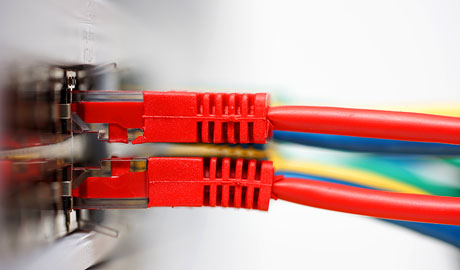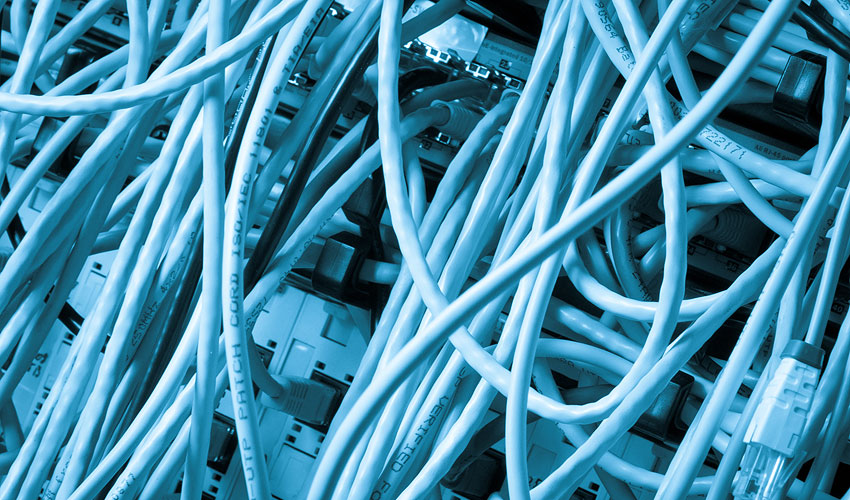Network infrastructures for security devices are complex. It may seem simple to connect an Ethernet cable to a cable modem, but the connection of IP cameras, access control devices and other IP/Power Over Ethernet (PoE) devices is not nearly so simple. Infrastructure is the heart of any system; and too often we attribute failure of connected devices to the devices themselves when the problem is actually an infrastructure failure.
Designing an infrastructure is made even more complex by the specifications we rely on. It is not that they are false; however, our belief that specifications represent fix values can result in applying equipment that falls short of accomplishing its goals.
There is a paradox in designing infrastructures for IP video security applications: On one hand, networking is a matter of physics and leaves no room for variations. However, the physics apply only within certain conditions, and conditions can change.
Here are the basic considerations in designing an IP video security infrastructure:
- Number of devices connected to network
- Number of devices routed to a single location
- Type of cabling used or already installed
- Cable length – usually the longest cable distance must be taken into account
- The PoE source: In most cases you will be dealing with devices powered by Power Over Ethernet
Maintaining a reliable connection
The goal is to have a reliable connection maintained over a variety of conditions. For this reason, it is important to start with the devices you are connecting. The most challenging of these are video cameras because we have to consider both bandwidth and required PoE power.
Bandwidth is a function of the camera itself in terms of its megapixel size. But the rest is up to you – how many images per second, the codec and compression all determine bandwidth. There are simple rules concerning bandwidth.
First, the higher the megapixel count, the higher the bandwidth.
Second, the codec has a huge effect on bandwidth requirements. If we start with H.264 as a baseline, consider that MJPEG can require up to six times more bandwidth. A single stream of 4K can require up to 50 Mbps depending on the compression ratio applied.
Understanding video compression ratios
The first step in considering how |
Compression ratios are associated with the codecs they are compressing, and the combination of the two have their limits. In some cases, a camera can offer the ability to continually stream video at one compression and also provide individual alarm images of a higher resolution using a different codec. This requires taking into account the bandwidth required for both the continuous and alarm image settings. Fortunately, many of these settings can be controlled as part of the operator setup.
This leads us to the most important bandwidth consideration, the network itself. The first step in considering just how much network bandwidth is available is to realise the device bandwidth must be matched to all devices on the network. For most security equipment that would be 100 Mbps.
Quality video transmission
Next is knowledge that within any bandwidth, only about half is available for actual data (video) transmission. The other half is taken up by overheads containing information regarding its transmission and reception points. In general, H.264 requires a safe allocation of about 2 Mbps; however, high-megapixel cameras and the use of other codecs could yield a requirement of up to 8 Mbps, thus reducing the number of cameras that can be transmitted over a single connection by a factor of four.
A difference among infrastructure products, cameras and recording devices is that the latter enables judgment. You can visually judge if you accept a camera by the quality of its picture or how easy a recording device is to operate. The same is not true for the infrastructure, which is based on physics and is black or white. There is no middle ground and little forgiveness. When bandwidth isn’t enough, you can realise a condition called mosaic where the picture appears as individual blocks or out of focus, or with no picture at all. In any event, it’s not a judgment call.
 |
| The 802.3 PoE standard has safety measures built-in to prevent transmitting power if no connection is made |
PoE standard safety measures
The same situation exists with PoE. The 802.3 PoE standard has safety measures built-in to prevent transmitting power if no connection is made or to shut down power in the event of a short. Once a connection is established and the power level required by the connected device is established, any raise in power for a period of time more than approximately 40 milliseconds will turn off power from the source.
Any raise in power for a period |
Let’s view this in more practical terms. A multiple PoE camera installation is completed during the day. During the night several accessory features on the cameras are activated such as Day/Night filtering and turning on LED. The PoE power increases sharply at first in order to activate the functions – this is known as surge power – prior to settling back to a lower operation level. The required surge power exceeds the power available from the PoE source, and all PoE power is shut off. The camera remains in the off position until reset. This often is a manual reset by powering down and up the PoE source or disconnecting and reconnecting the cable. In any event, the camera remains in off. Depending on the number of cameras and amount of PoE power, this usually doesn’t affect all the cameras, so a person commonly mistakes this for a defective camera. The same is true with bandwidth.
Importance of networking infrastructure
Within a network you can think of both bandwidth and PoE as a bank with a set amount of funds. Each camera is a person withdrawing money. At some point you just run out of money, and the next person who makes a request either gets less than they requested or nothing at all.
This helps to illustrate how important networking infrastructure is. It is made even more important by the differences between data and video networks. Data network requires bandwidth which, even for small megapixel cameras, is 96% less than video, while PoE for VoIP phones can be about 40%. Every component within a transmission affects all the components and as such the performance of the infrastructure as a whole.











































